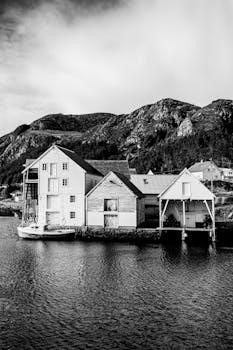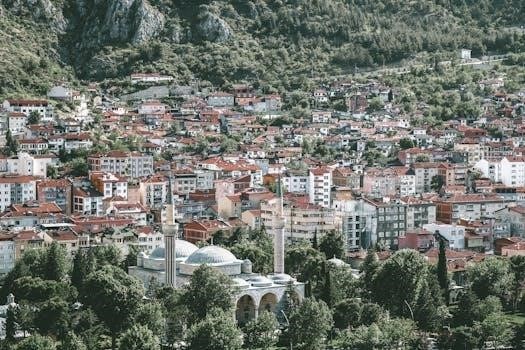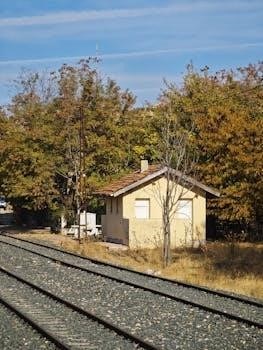
the house of hades pdf
Overview of “The House of Hades”
Rick Riordan’s “The House of Hades,” the fourth book in the “Heroes of Olympus” series, marks a critical juncture in the demigods’ quest. Percy Jackson and Annabeth Chase face immense danger in the Underworld. Their mission is to close the Doors of Death and prevent Gaea’s rise.

Plot Summary of “The House of Hades”
“The House of Hades” plunges Percy Jackson and Annabeth Chase into the depths of Tartarus after falling through a chasm in the previous book. Separated from their friends, they face unimaginable horrors and mythical monsters, navigating the treacherous landscape of the Underworld. Their primary goal is to find the Doors of Death and close them from the inside, preventing Gaea’s forces from unleashing more monsters upon the mortal world.
Meanwhile, above ground, the remaining five demigods—Jason Grace, Piper McLean, Leo Valdez, Hazel Levesque, and Frank Zhang—embark on a perilous journey to Epirus, Greece. They seek to find the House of Hades, an ancient temple rumored to hold the key to opening the Doors of Death from the mortal side. Their voyage is fraught with challenges, as they encounter various mythical creatures and face their own personal demons.
Throughout their respective journeys, both groups of demigods confront their deepest fears and forge stronger bonds. Percy and Annabeth’s relationship is tested as they endure the horrors of Tartarus together, while the others grapple with their individual powers and insecurities. The story intertwines action, adventure, and emotional depth, culminating in a race against time to save the world from impending doom. The book ends with a glimmer of hope, setting the stage for the final installment of the series.
Key Characters in “The House of Hades”
“The House of Hades” features a diverse cast of characters, each playing a crucial role in the unfolding events. Percy Jackson, the son of Poseidon, and Annabeth Chase, the daughter of Athena, are central figures, enduring immense hardship in Tartarus. Their resilience, courage, and unwavering loyalty to each other drive the narrative forward as they navigate the Underworld’s perils.
Jason Grace, son of Jupiter, leads the remaining demigods on their quest to Epirus. His leadership skills and strategic thinking are vital in guiding the group through treacherous landscapes and formidable foes. Piper McLean, daughter of Aphrodite, uses her charmspeak abilities to influence others and resolve conflicts, showcasing her growing confidence and inner strength.
Leo Valdez, the son of Hephaestus, provides much-needed humor and technical expertise, crafting ingenious inventions to aid the demigods in their journey. Hazel Levesque, daughter of Pluto, grapples with her past and her control over precious metals, demonstrating her determination to overcome her inner demons. Frank Zhang, son of Mars, possesses the ability to shapeshift, making him a versatile and powerful asset to the team. Together, these seven demigods embody a range of strengths and weaknesses, highlighting the importance of teamwork and camaraderie in the face of adversity.

Mythological Elements in “The House of Hades”
Rick Riordan masterfully weaves Greek and Roman mythology throughout “The House of Hades,” enriching the narrative with iconic creatures, gods, and locations. The Underworld itself, ruled by Hades (or Pluto in Roman mythology), serves as a central setting, teeming with mythical dangers and ancient secrets. The River Styx, a crucial element of the Underworld, presents a formidable obstacle, requiring careful navigation and respect for its power.
Cerberus, the monstrous three-headed dog guarding the entrance to the Underworld, embodies the fearsome creatures of mythology. Encounters with various monsters, such as giants and other mythical beasts, challenge the demigods’ skills and courage. The presence of gods and goddesses, though often indirect, influences the events of the story, reminding readers of the powerful forces at play.
References to ancient myths and legends, like the stories of Orpheus and Eurydice, add depth and context to the demigods’ journey. The incorporation of these mythological elements not only enhances the fantasy aspect of the novel but also provides an engaging way for readers to learn about classical literature and mythology. Riordan’s skillful integration of these elements makes “The House of Hades” a captivating and educational read.
The Significance of the Underworld Setting
The Underworld in “The House of Hades” represents more than just a location; it is a symbol of fear, death, and the unknown. It amplifies the stakes for Percy and Annabeth, intensifying their personal struggles and testing their resolve.
Hades’ House Location and Description
In the realm of the Underworld, Hades’ house stands as a formidable and imposing structure, a testament to the power and authority of its master. Its location is significant, situated on the shores of the River Styx, the very boundary between the land of the living and the domain of the dead. This placement reinforces the house’s role as a gateway and a final destination.
The description of Hades’ house evokes a sense of dread and unease. Constructed from obsidian, a volcanic glass known for its dark and reflective qualities, the house exudes an aura of coldness and permanence. The obsidian walls reflect the sorrow and despair of the Underworld, creating an atmosphere of oppressive gloom. Torches flicker with an eerie green flame, casting long, distorted shadows that dance across the walls, adding to the unsettling ambiance.
The architecture of the house is both grand and menacing. Towering columns, carved with scenes of death and torment, support a heavy, imposing roof. The entrance is guarded by massive iron gates, adorned with skulls and bones, serving as a stark reminder of the fate that awaits all who enter. Within the house, vast halls echo with the whispers of the departed, and hidden chambers conceal secrets best left undisturbed. The overall impression is one of immense power and inescapable finality, a fitting residence for the god of the Underworld.
Cerberus⁚ Guardian of the House of Hades
Cerberus, the monstrous three-headed dog, stands as the unwavering guardian of Hades’ house, a fearsome sentinel ensuring that no soul escapes the Underworld’s grasp. His presence is synonymous with the impenetrable nature of the realm of the dead, a symbol of the finality and irrevocability of death.
Each of Cerberus’s heads possesses a unique personality and purpose. One head is vigilant, constantly alert for any sign of intrusion or attempted escape. Another head is ferocious, ready to unleash a barrage of teeth and claws upon any who dare to challenge his authority. The third head is mournful, its howls echoing the sorrow and despair of the souls trapped within the Underworld.
Cerberus’s physical description is as terrifying as his reputation. His three heads are adorned with serpentine manes, his eyes glow with an infernal fire, and his breath reeks of decay and death. His massive body is covered in coarse, black fur, and his claws are as sharp as razors. He is a creature of immense power and ferocity, capable of tearing apart even the strongest of heroes.
Despite his fearsome appearance, Cerberus is not without his weaknesses. He can be pacified with offerings of honey cakes or lulled to sleep with soothing music. However, these moments of vulnerability are rare, and only the most cunning and resourceful can hope to outwit the guardian of Hades’ house.
Themes Explored in “The House of Hades”
“The House of Hades” delves into profound themes of sacrifice, resilience, and the enduring power of friendship amidst overwhelming adversity. The demigods face seemingly insurmountable odds, forcing them to make difficult choices that test their loyalty and courage. Their journey through Tartarus highlights the theme of perseverance, as they navigate treacherous landscapes and confront terrifying monsters, refusing to surrender to despair.
The novel also explores the theme of identity, as Percy and Annabeth grapple with their roles as demigods and their personal desires. Their relationship is tested as they confront their deepest fears and insecurities, ultimately strengthening their bond through mutual support and understanding. The theme of fate versus free will is also prominent, as the characters question whether their destinies are predetermined or if they have the power to shape their own futures.
Furthermore, “The House of Hades” examines the theme of good versus evil, as the demigods confront Gaea and her forces, who threaten to plunge the world into chaos. The novel emphasizes the importance of unity and cooperation in the face of overwhelming darkness, highlighting the power of hope and the unwavering belief in the possibility of a better future.

Critical Reception and Popularity of the Book
“The House of Hades” garnered widespread critical acclaim and immense popularity upon its release, solidifying its place as a fan favorite within the “Heroes of Olympus” series. Reviewers lauded Rick Riordan’s masterful storytelling, compelling characters, and thrilling plot, which kept readers on the edge of their seats from beginning to end. The book’s darker tone and higher stakes resonated deeply with audiences, who praised the emotional depth and character development.
The novel’s exploration of mature themes, such as sacrifice and loss, was also well-received, elevating it beyond typical young adult fantasy. Critics appreciated Riordan’s ability to seamlessly blend humor, action, and heartfelt moments, creating a truly immersive reading experience. “The House of Hades” quickly climbed bestseller lists, captivating readers of all ages and further expanding the series’ dedicated fanbase.
The book’s popularity extended beyond literary circles, inspiring fan art, cosplay, and online discussions, demonstrating its lasting impact on popular culture. Its success cemented Rick Riordan’s reputation as a master of mythology-inspired fiction and solidified the “Heroes of Olympus” series as a cornerstone of the young adult genre. “The House of Hades” remains a highly recommended read for fans of fantasy, adventure, and mythology.
Connections to Other Books in the “Heroes of Olympus” Series
“The House of Hades” is intricately connected to the preceding and succeeding books within the “Heroes of Olympus” series, building upon established plotlines and character arcs. As the fourth installment, it directly follows the events of “The Mark of Athena,” picking up with Percy and Annabeth’s perilous descent into Tartarus. The book relies heavily on the relationships and alliances forged in previous novels, such as the bond between the seven demigods destined to save the world.
Characters introduced in earlier books, like Nico di Angelo and Reyna Avila Ramírez-Arellano, play pivotal roles, their past experiences shaping their actions and decisions. The overarching conflict with Gaea, the Earth goddess, is further developed, with “The House of Hades” revealing more about her plans and the challenges the demigods must overcome.
Furthermore, the book sets the stage for the series’ climax in “The Blood of Olympus,” resolving certain plot threads while introducing new obstacles. The knowledge gained and the sacrifices made in “The House of Hades” directly influence the events of the final book, making it an essential piece of the overall narrative. Understanding the events of prior installments is crucial to fully appreciating the significance and impact of “The House of Hades.”

Adaptations of “The House of Hades”
As of the current date, “The House of Hades,” while a popular and critically acclaimed installment in the “Heroes of Olympus” series, has not yet received a direct adaptation into a major motion picture or television series. However, the broader “Percy Jackson” universe, which includes the “Heroes of Olympus” series, has seen adaptations in other forms. Notably, the initial “Percy Jackson” series has been adapted into films, and a new television series adapting the first book, “The Lightning Thief,” has been released on Disney+.
While “The House of Hades” itself lacks a direct adaptation, elements and characters from the book may be incorporated into future adaptations of the “Heroes of Olympus” series. Given the increasing popularity of book-to-screen adaptations, and the success of the “Percy Jackson” series, it is possible that “The House of Hades” will eventually be adapted in some form.
Fans have often expressed their desire to see the events of “The House of Hades” brought to life, particularly the harrowing journey through Tartarus and the interactions with various mythological creatures. The book’s intense action sequences and emotional depth offer significant potential for a compelling adaptation.